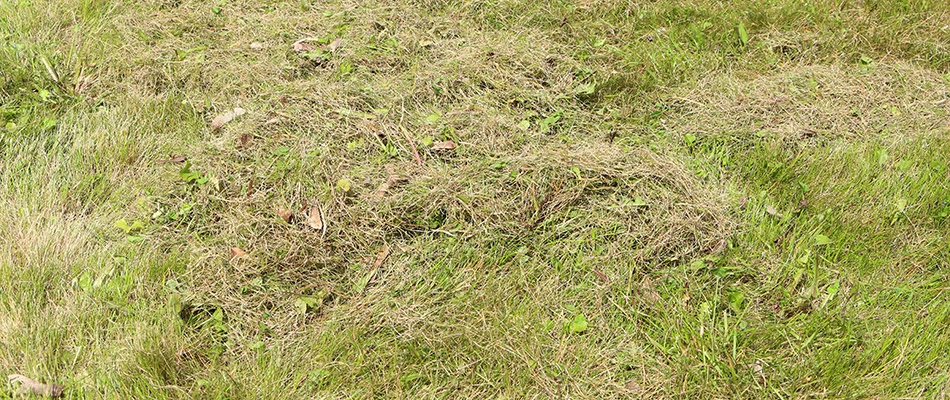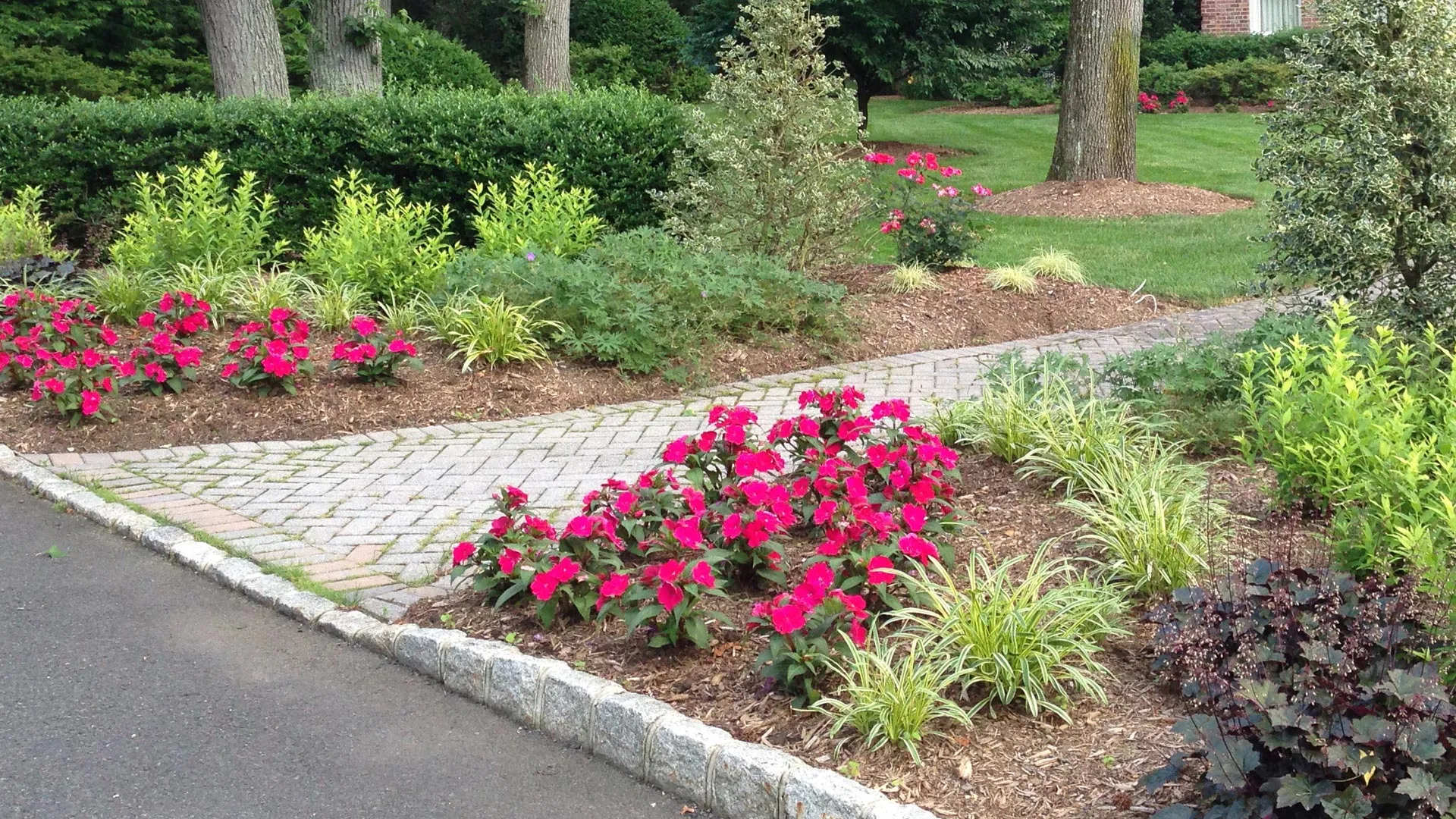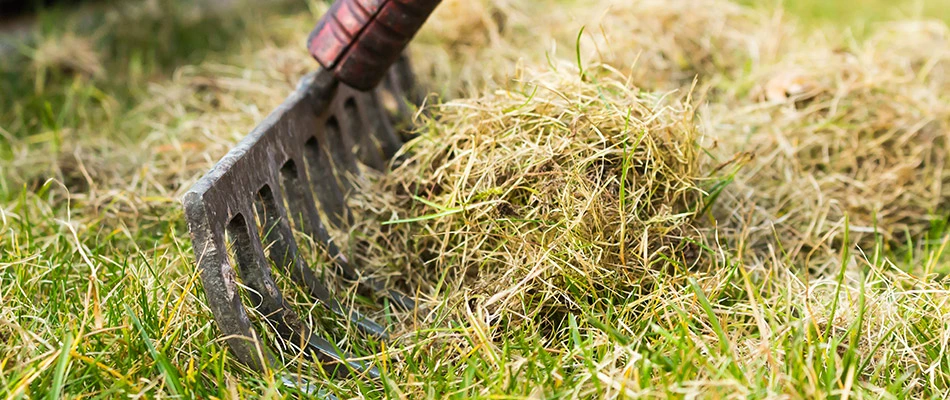Beneath the surface of your lawn is a layer of debris called the thatch. This layer consists of organic material—dead vegetation like leaves and grass clippings—that can harm your lawn if it gets too thick. Some of the negative impacts of thatch buildup include a breeding ground for pests, limited airflow, and possible fungal growth. When the layer interferes with healthy grass growth, it’s vital to quickly dethatch your lawn.
Deciding to dethatch isn’t as straightforward as knowing when to mow your lawn. Not every lawn needs dethatching at the same time, and performing the process when it’s not yet necessary can actually damage your landscape. For this very reason, it’s essential to have professional landscapers like ours examine your lawn and determine when it needs dethatching.
Thatch is a layer of grass clipping and organic material that builds up between the soil and grass.
Thatch is a dense mixture of organic material that settles at the grass base, just above the roots and soil. The material consists of decomposing material that helps deliver nutrients to the root system and soil. A thatch layer that’s about one-half inch thick is optimal for lawn health.
When the material decomposes at an average pace, the thatch layer remains thin and promotes healthy grass growth. However, if the thatch contains material that doesn’t decompose quickly, the thatch layer can thicken. A thick layer of thatch can result in several problems, including:
- Blocking sunlight and moisture from the soil and roots
- Retaining humidity, which leads to fungus growth and disease
- Limiting airflow
- Promoting a breeding ground for pests
Several factors contribute to a thick layer of thatch. If your lawn consists of aggressively spreading grasses—like bluegrass, fescues, or Bermuda grass—it might require seasonal dethatching. Over fertilization can also contribute to a thickening thatch, as can heavy applications of pesticides. Other contributing factors are soil that’s heavily compacted, not correctly aerated, or has too much acidity.
How to know when your lawn needs a dethatching service?

Healthy soil and roots are the keys to a lush, green lawn--so it’s essential to ensure that thatch stays at an optimal thickness. A healthy thatch layer will act as a self-sustaining composting system by constantly delivering moisture, nutrients, and natural pest protection to the soil.
To determine if your lawn needs dethatching, you’ll need to assess its thickness by collecting samples across your landscape. You also can spot signs of an unhealthy thatch layer by just looking at your lawn. If you see any of the following signs, it might be time to dethatch:
- Excessive dry patches
- Increased insect activity
- Increased lawn disease
- Less hardy grass that is over-reactive to temperature changes
When is the best time to have your lawn dethatched?
Deciding on a time to dethatch your landscape should always be determined by a lawn care professional because cool-season and warm-season grasses have different growth cycles that must be considered before dethatching. It’s best to dethatch when the grass is actively growing and can rapidly recover from the process.
- Cool-season grass: spring or fall dethatching
- Warm-season grass: early summer dethatching
Call our lawn care professionals to schedule a dethatching service.
Thatch can be very beneficial to your lawn. It helps protect your grass from heat and cold while also helping soil retain moisture and can prevent weeds and insect infestations. However, it should remain a thin layer, and when it becomes too thick, contact our team to restore proper circulation. We have over 30 years of experience in the lawn and landscape industry!
If you have a property in Westfield, Watchung, Warren, or a nearby city in NJ, call us at (833) 452-9666 to schedule a professional detaching service today!



Comments (0)
Thanks for your comment!
Thanks for your feedback! Your comments have been successfully submitted! Please note, all comments require admin approval prior to display.
Error submitting comment!
There is a problem with your comment, please see below and try again.